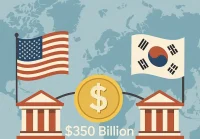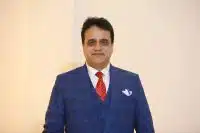This tiny island nation is smaller than New York City, but it stands as the wealthiest country in Asia and among the richest globally. Singapore’s GDP per capita has surpassed developed nations including the United Kingdom, United States, and France. Over six decades, this former colonial trading port transformed into a buzzing financial center that serves as a model for countries seeking robust, high-tech economic development.
The foundation of Singapore’s extraordinary wealth represents the culmination of decades of deliberate planning by a political party that has maintained power since independence. As Singapore experiences its first leadership transition in 20 years, the nation faces critical questions about whether it can sustain this success amidst new challenges. Understanding Singapore’s formula reveals both impressive achievements and complex trade-offs between prosperity and personal liberties.
Manufacturing: The Foundation of Transformation
When Singapore became independent in 1965, Prime Minister Lee Kuan Yew and his founding leadership confronted a stark economic reality: the island possessed no natural resources whatsoever. If Singapore wanted to develop an export-led economy capable of attracting foreign capital, they would need to build their manufacturing industry from nothing.
Their geographic positioning provided a crucial advantage. Singapore commands access to the Strait of Malacca, offering routes to both the Indian Ocean and South China Sea, making it a pivotal global shipping hub. This strategic location became the cornerstone of their initial development strategy.
The government transformed Singapore into a manufacturing base, initially focusing on labor-intensive industries designed to eliminate the nation’s severe unemployment problem. Textiles, shipbuilding, and electronics assembly provided jobs for the rapidly growing population. However, Lee Kuan Yew always viewed manufacturing as merely a stepping stone toward a more sophisticated economy.
During these foundational years, Lee established critical institutions that would support decades of growth. He created a solid financial and legal system that gave international investors confidence. He built a stable, largely clean government apparatus that functioned efficiently. He invested in world-class public transportation infrastructure and healthcare systems that supported high-quality living standards for both residents and expatriates.
Financial Liberalization: Creating the Wealth Engine
By the 1980s, Lee Kuan Yew began laying groundwork for what would become Singapore’s greatest source of wealth: finance. Following models from the United States and United Kingdom, he made the strategic decision to liberalize the financial services industry through lighter-touch regulation that attracted international capital.
The results speak for themselves. Today, 4,200 multinational companies maintain regional headquarters in Singapore. Low taxes represent a significant draw: Singapore’s corporate tax rate sits at just 17%, with some activities qualifying for rates of 13.5% or lower. This aggressive tax strategy, combined with efficient government services and quality infrastructure, created an irresistible environment for international business.
When Lee’s successor Goh Chok Tong took power, he continued this focus on attracting big business while shifting emphasis toward a knowledge-based economy that would rely more on creativity and entrepreneurship. This evolution prepared Singapore for the global transition toward service-oriented, technology-driven economies.
The Premium Destination Strategy
When Lee Hsien Loong, Lee Kuan Yew’s eldest son, assumed the premiership in 2004, he recognized that to retain the flow of businesses and wealth, Singapore needed to become more than just a business hub—it had to transform into a destination itself. With its prime location already established, the government embarked on ambitious projects to make Singapore irresistibly attractive.
An extensive land reclamation project initiated in the 1970s provided the physical space for transformation. Over decades, Singapore filled reclaimed territory with not merely offices and apartment buildings, but entertainment hubs that fundamentally changed the city skyline. The government brought Formula One’s night race to Singapore, creating a spectacle that drew international attention. They welcomed casinos, or integrated resorts as they’re termed locally, despite long-standing social reservations about gambling.
The timing proved impeccable. As Chinese and Indian economies were booming, Singapore positioned itself perfectly to attract the region’s ultra-wealthy. These individuals could enjoy Singapore’s casinos and nightlife while parking their money in what they viewed as a safe, stable financial center with favorable tax structures and strong legal protections.
The results were staggering. The total value of assets under management in Singapore jumped from $420 billion at the start of Lee Hsien Loong’s tenure to $3.6 trillion by 2022. This represents an eight-and-a-half-fold increase in wealth managed through Singapore’s financial institutions.
The Cost of Success
While Singapore’s economic achievements are undeniable, its leadership model has drawn consistent criticism for restrictions on civil liberties and media freedom. The government has maintained tight control over press coverage, with Lee Kuan Yew famously stating that freedom of the press must be subordinated to the overriding needs of maintaining Singapore’s integrity.
Critics argue that under Lee Kuan Yew’s governance, Singapore developed a climate of fear where citizens felt afraid to criticize the government. Subsequent administrations maintained this tight grip, keeping most forms of protests illegal while exercising significant control over the political process.
The government recognizes that Singapore’s population is becoming more diverse, more educated, and more vocal in their demands. Social media and globalization have made it increasingly difficult to maintain the same level of control that characterized earlier decades. Meanwhile, Singapore must stay competitive as other countries learn from its successful growth model, particularly nearby nations in Southeast Asia that can offer lower costs.
Singapore’s Evolving Landscape
As Singapore grows more diverse and globally connected, governance and competitiveness must evolve in tandem. A more educated, vocal population demands transparency and innovation, while regional rivals offer new challenges in cost and agility. Adaptability, policy insight, and cross-cultural fluency will define the next generation of leaders.
Explore Public Policy & Global Affairs Roles →New Challenges for New Leadership
Climate change poses an existential threat to Singapore’s national security as sea levels rise. The country’s rapidly aging population will add pressure to workforce growth and government spending on healthcare and retirement benefits. While Singapore’s growth model has involved attracting foreign labor, citizens increasingly express concern that foreigners are taking too many good jobs, creating social tensions that didn’t exist in earlier decades.
Housing prices have increased dramatically, and the cost of living has risen significantly. While statistical measures show inequality has been reduced in recent years, many residents don’t feel this improvement in their daily lives.
Lawrence Wong inherits this complex Singapore as the country’s new prime minister. Wong, who grew up in public housing, earned praise for his leadership during Singapore’s COVID-19 response. He is seen as having more of a common man’s touch than previous leaders, which may be necessary as the People’s Action Party’s popularity declines.
Wong faces the challenge of building on Singapore’s established success while addressing growing public discontent. Whether it’s managing social tensions, navigating an uncertain geopolitical environment, or guiding Singapore’s continued evolution into an AI and technology hub, Wong’s success depends on sustaining what Singapore has built while adapting to changing times.
Frequently Asked Questions
Q: How did Singapore become so wealthy without natural resources?
A: Through strategic planning that leveraged its location as a shipping hub, developed manufacturing capabilities, and then became a global financial center by offering low taxes, efficient services, and world-class infrastructure to attract multinational corporations and wealthy investors.
Q: What is Singapore’s corporate tax rate?
A: Singapore’s corporate tax rate is 17%, with certain qualifying activities receiving rates as low as 13.5%, making it highly competitive internationally.
Q: Who built Singapore’s economy?
A: Lee Kuan Yew, Singapore’s first prime minister, established the foundation by creating a strong financial and legal system, efficient government, and investing in infrastructure. His successors continued this model, transforming Singapore into a knowledge-based economy.
Q: What challenges does Singapore face now?
A: Rising housing costs, growing inequality perceptions, aging population, climate change threats, maintaining competitiveness as other countries adopt similar models, and citizen demands for greater political freedoms.
Q: How has Singapore’s leadership changed?
A: Lawrence Wong became prime minister in 2024, ending a 20-year leadership era. Wong faces declining popularity of the ruling party and must address social discontent while maintaining economic success.
Q: Is Singapore a democracy?
A: Singapore holds elections, but the People’s Action Party has maintained power since independence through a system that critics argue restricts political opposition and civil liberties in exchange for stability and prosperity.




